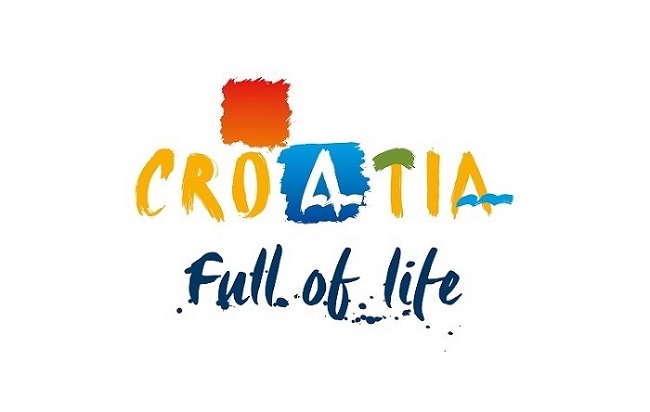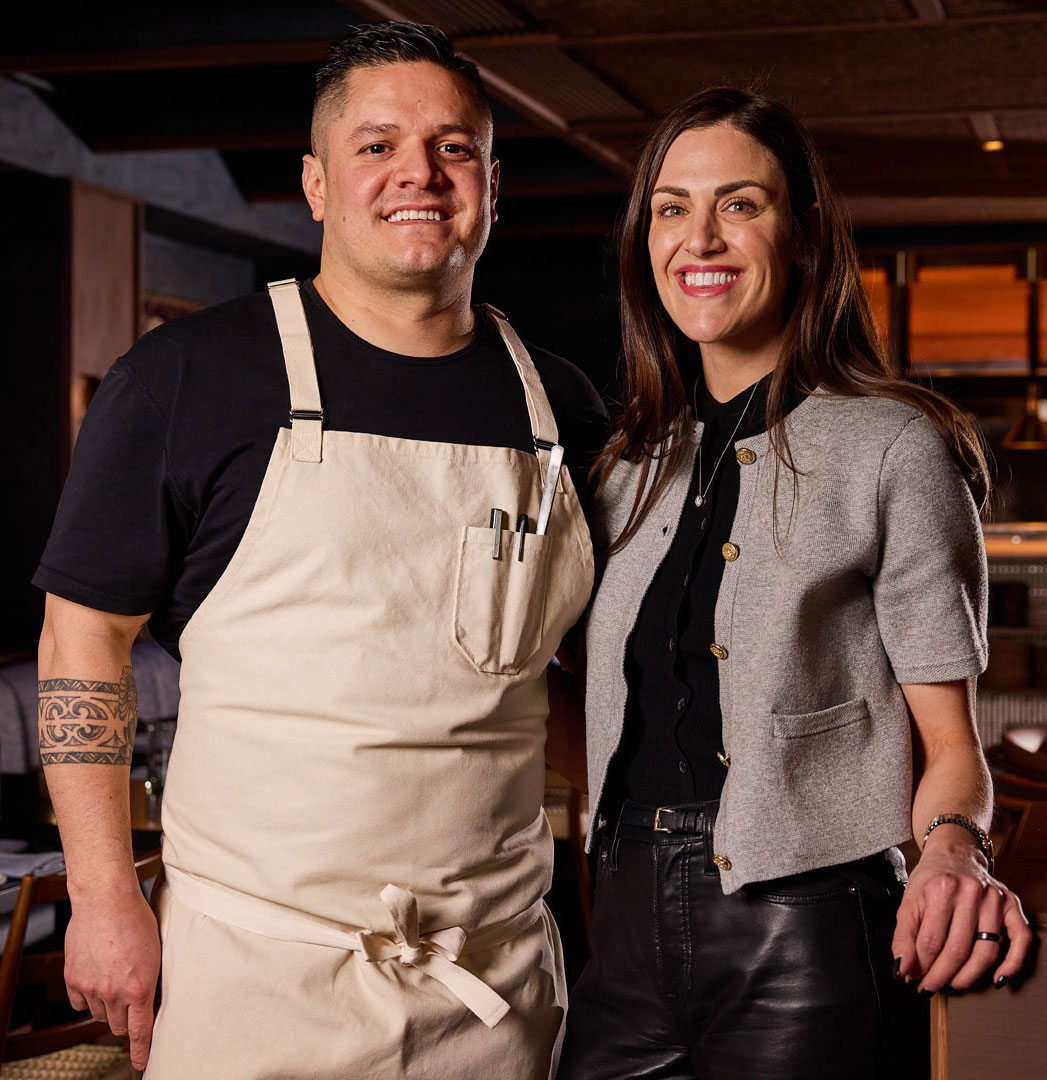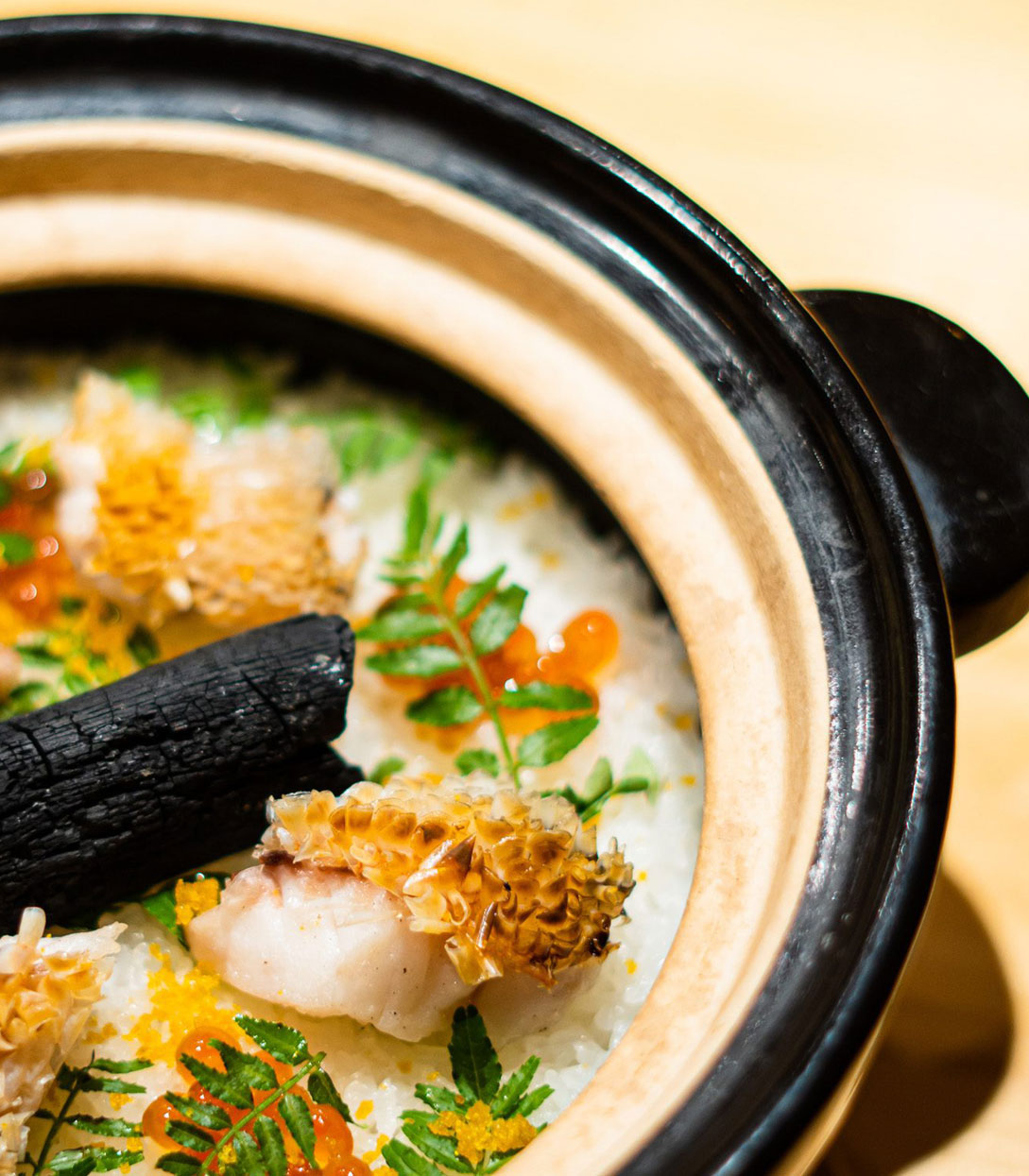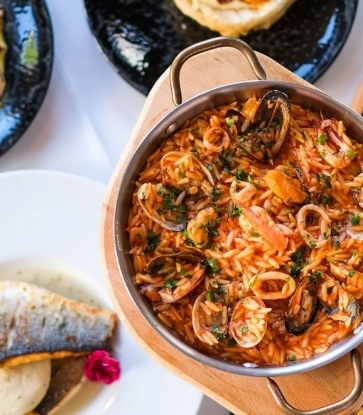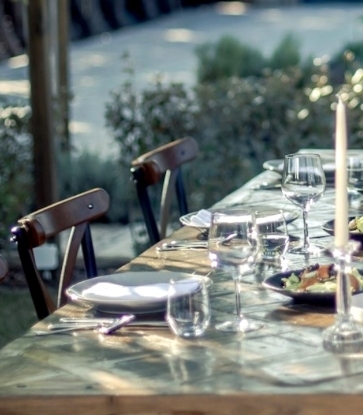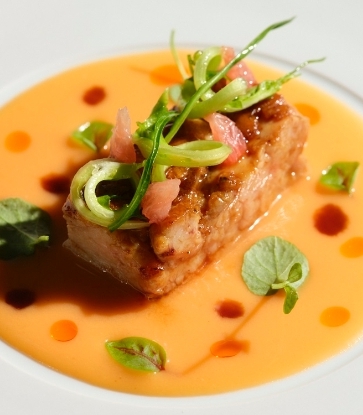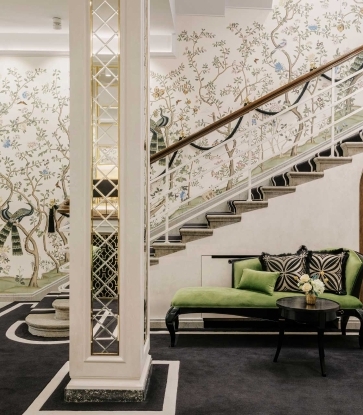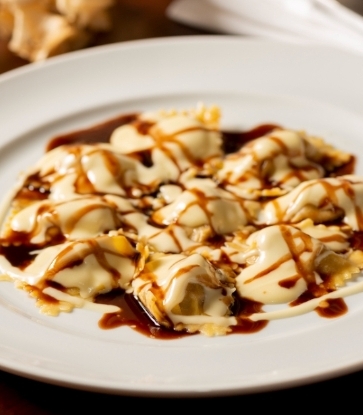Croatia is one of the world’s most popular travel destinations, especially for those seeking crystal-clear water, nature, culture, art, delicious cuisine, superb local ingredients and stunning landscapes. It’s true to say that the country is a multi-faceted jewel teeming with different options for visitors, who can enjoy an array of varied and fascinating experiences.
And what’s more, Croatia offers exciting surprises for visitors throughout the year. In winter, for example, admire the icy landscapes of the Plitvice Lakes National Park, and enjoy its festively decorated towns where a warm and friendly welcome is always guaranteed in the lively and cheerful atmosphere of local restaurants and cafés.
Autumn is just as magical thanks to its majestic colours and the flavour and scent of local ingredients that fill the air with their aromas. In Istria, for example, the truffle (one of the country’s world-renowned and top-quality products) is celebrated to the full. This highlight of the autumn season is showcased by the hunt for white truffles, best paired with one of Istria’s prestigious wines as part of a true celebration of life. The autumnal culinary treasures of the village of Lovran are the chestnuts that grow on the slopes of the Učka range, where the mountains extend down to the sea. And no description of autumn in Croatia is complete without mentioning wild mushrooms, one of the country’s seasonal delicacies, or the grape harvest, a time when visitors can peek inside cellars and sample some of Croatia’s native wines. The atmosphere is particularly joyful in the interior of the country where the festival of St Martin is celebrated every year which, among other events and ceremonies, includes the baptism of new wines and the preparation of traditional dishes such as duck with mlinci (thin noodles baked in the oven), invariably accompanied by a glass of good wine. The olive harvest along the Croatian coast from Istria to Dubrovnik is another event not to be missed, highlighting the tireless work of local olive-growers. The olive is deeply rooted in the history and culture of Croatia where, thanks to the country’s particularly favourable climate, some of the world’s best olive oil is produced. The olive harvest provides a unique insight into the outdoor way of life, and is a once-in-a-lifetime experience rewarded with the tasting of this liquid gold in one of the many artisanal olive-oil mills.
And when spring arrives, visitors will be captivated by clear blue skies and clean, crisp air. The season is perfect for those keen to explore the country’s magical history, venture across its verdant mountain slopes, take to the azure waters of the Adriatic and savour an array of gastronomic delights – as a result, the exuberance of spring in Croatia is contagious! It is worth noting that Croatia’s cities are becoming increasingly “green”, so why not combine cultural visits to museums and historic buildings with a stroll in one of the country’s many urban parks for welcome rest and respite after your explorations.
Summer, meanwhile, is the liveliest and most enjoyable time of the year in Croatia. This country with a thousand islands and a million smiles becomes even more inviting in summer, thanks to its countless beaches fringed by idyllic crystal-clear waters. To add to the appeal, many towns stage summer festivals, concerts and open-air plays at this time of year.
And so, thanks to the recommendations made by our MICHELIN inspectors, here are some suggestions to help you discover some of Croatia’s unmissable highlights, which will introduce you to the varied attractions of this unique country.
Let’s start in Istria, an appealing region teeming with tradition, where the more visited section of the coast (picturesque towns such as Umag, Novigrad, Poreč, Rovinj and Pula) leads to a magical, verdant hinterland where you can visit gems such as Grožnjan, Motovun, Oprtalj and Gračišće. Here, olive groves and vineyards soak up the heat and the aromas of the nearby sea. The rich cultural tapestry of the Istrian peninsula is evident in its buildings that date from different historic periods, including highlights such as the Roman amphitheatre in Pula and the Euphrasian basilica in Poreč – monuments which attract tourists from across the globe.
Top-quality wines are produced in Istria’s gently sloping hills, such as Istrian Malvasia, with its refined aromas and fresh flavours that make it the perfect accompaniment to fish and seafood dishes. Other wines include Terrano and Refosco, both of which are made from old, native Istrian grape varieties that result in dark ruby colours and fruity, intense aromas that pair well with delicious meat dishes. And finally, there’s Moscato wine with its amber tones that encapsulate the warm sunshine of this region. All of these wines are produced using a combination of traditional wisdom and cutting-edge techniques.
Another top-quality Istrian product is undoubtedly the region’s extra-virgin olive oil, which is so precious that the Ancient Romans exported it throughout their empire, using it not only in food but also in body care and as a natural remedy for ailments and illnesses. One of the symbols of the Mediterranean basin, Brijuni National Park – a national park that is unique in that it comprises 14 islands with a total surface area of 736 hectares – is home to one of the oldest olive trees in the Mediterranean, thought to be around 1,600 years old. This true wonder of nature confirms that Istrian olive oil has been synonymous with excellence ever since the time of the Greeks and Romans, boasting a quality that made it a benchmark for all other olive oils produced around the world.

During your visit to Croatia, don’t miss Buje, a small town that was often referred to in the past as the “sentinel of Istria” thanks to its strategic location at an altitude of 222m. Standing amid beautiful rolling hills, its highlights include the medieval walls of St Martin’s tower and the impressive belltowers of the churches of St Servulus and St Mary of Mercy.
Just a short distance from Buje, the hilltop village of Mužolini Donji is home to the beautiful and charming San Canzian Hotel & Residences, the first stop on our tour. Built on the site of medieval fortifications, the hotel occupies a group of stone buildings housing 28 guestrooms and suites, each different in style, as well as a bar and a restaurant. The hotel’s design is highly contemporary, providing a pleasing contrast of old and new, while facilities include an outdoor pool and a luxurious spa.
The jewel in the hotel’s crown is the Luciano restaurant, where you can enjoy a delicious array of local ingredients. The vegetables served here are organic and sourced from suppliers in the local area. “At our Luciano restaurant, you’ll find top-quality local ingredients transformed into dishes full of authentic flavour, all presented in elegant and contemporary style,” explains Bruno Šarić, General Manager of the San Canzian Village & Hotel. “For us, local produce is always the star of the show, and we also believe firmly in the principle of simplicity. We source our ingredients exclusively from small-scale producers based close to the hotel, including farmers, growers and artisans, which guarantees top-quality, artisanal produce.”
The Luciano restaurant is situated in the heart of the north-western part of Istria, which has long been the gastronomic hub of the region. This area is a centre for many enthusiastic producers of wine, olive oil, cured ham, cheese and truffles, all of whom keep traditional production methods alive. “Our menu showcases regional specialities such as asparagus and strawberries in spring, as well as local maize, sheep’s curd and milk, aromatic fennel and sorghum,” Bruno Šarić continues enthusiastically. “We also have our own kitchen garden where we grow tomatoes, peppers and courgettes. We respect our ingredients from field to plate, bringing out their best qualities via haute-cuisine cooking methods and techniques. Tradition, zero-mile produce, zero waste, seasonality, contemporary interpretation and creativity – these are our strengths.”
Among the restaurant’s signature dishes are the “Maneštra” stew of octopus, beans, olives, and sourdough bread; fish fillet (catch of the day) on a sweet potato cream accompanied by vegetables from the kitchen garden; wild boar shoulder ragù with black trumpet mushrooms and home-made gnocchi; beef fillet with a mushroom and truffle ragù; and veal loin with confit leek, tonka bean sauce and black garlic. The desserts are also superb, including the buckwheat tart with strawberries, lavender, ricotta and white chocolate cream, and the pistachio biscuit with cherry jam and lime cream.
One of the restaurant and resort’s specialities is an exceptional olive oil that is produced for the hotel restaurant and tastings for guests (it has a limited production of just 6,000 bottles). The name of this olive oil is San Canziano, a blend of 55% Leccino, 20% Istarska Bjelica, 15% Frantoio and 10% Pedolino olives, which has a balanced and elegant taste along with an appealing mix of spicy, bitter and fruity flavours. This oil is the perfect accompaniment to salads, raw fish dishes, semi-aged cheeses and white meat. At the restaurant, you can also sample San Canzian Frantoio, an Italian olive variety that originated in Tuscany and which has been cultivated in Istria since the 1940s. This intensively flavoured oil has hints of raspberries and wild herbs, is light green in colour and boasts fruity aromas with dominant notes of green olives, almonds and aromatic herbs. The finish is pleasantly bold and spicy.
The San Canziano Bianchera, a native Istrian variety, is also excellent. This oil has a fresh aroma reminiscent of green olives and freshly cut grass, and a spicy, bitter taste which makes it perfect for anyone who enjoys strong flavours. “We make a point of telling each guest that our menu is based exclusively around local ingredients,” concludes Šarić. “One of our particular characteristics is the use of spice and fruit combinations that remind us that Istria was once closely linked to Venice – the Istrian peninsula was in fact a Venetian possession for more than seven centuries. Spices were brought here by explorers, who also encouraged the local cultivation of different types of citrus fruit. We love and respect our past and enjoy presenting it in a new way so that it can continue to be an essential part of our cultural and culinary future.”

Let’s move on from these green, rolling hills and make for the splendid Croatian coast overlooking the Adriatic sea – here, 1,200 magnificent islands await the curious traveller. One of the most popular tourist destinations here – and not just in summer – is the fascinating island of Pag, the unique features of which include karst rocks that stand out against the blue sky, enticing cultural monuments and numerous visitor attractions. Here, between two mountain ridges in a land of Mediterranean maquis dotted with around a dozen villages, visitors can experience a slow and authentic way of life. Thanks to the work of local farmers and growers, this fertile land yields excellent products such as the local Žutica white wine.
Pag is also home to the cheese of the same name – in Croatian, Paški sir or “Pag cheese” – which is made from the milk of native sheep that graze on aromatic plants and brackish herbs, giving the final product a unique and unmistakeable flavour. Meanwhile, the island’s most famous craft products are the lace and lacework that are often framed and hung on walls like works of art. The island also offers exciting nightlife that is mainly concentrated along the beaches of Zrće and is popular with visitors who enjoy partying and dancing late into the night.
Here, if you walk along the road that leads to Stara Novalja, you’ll come to a large sign decorated with six white barrels that tells you that you’ve arrived at the Boškinac boutique hotel. This splendid wine resort is nestled amid tranquil green hills, vineyards and olive groves where one single building is home to a hotel, the MICHELIN-starred Boškinac restaurant and a winery where guests can sample the region’s superb wine. The air is often scented with sage and savory, while the view extends over the surrounding fields and countryside.
The resort is housed in a magnificent stone building which boasts meticulously decorated rooms of different styles, the design of which is inspired by a local plant or object. All the guestrooms and suites have been fitted out with carefully chosen natural materials and furnished with hand-made pieces, while an outdoor swimming pool surrounded by parasols and well-tended plants allows guests to enjoy summer to the full. Wine-enthusiasts will be in their element in the magnificent wine cellar, which has always been the focal point of the Šuljić and Boškinac families’ lives. Although cultivation methods have changed over the years, and the region’s dramatic wars have left their mark, the vineyards provide a symbol of hope for the future, with wine production having continued without interruption over the centuries.
The wine-making tradition has been passed on from the Boškinac grandfather to his grandchildren, who combine his traditional methods with the use of more modern technology. “Living on this rocky soil and continuing to follow in the footsteps of our ancestors has been a constant feature of our family life,” says owner Boris Šuljić, who runs the estate with his wife Mirela. “We’re proud of this. We wanted to bring these traditions into the future, building a new wine cellar in 2000 and, in the same year, planting a new 5-hectare vineyard. As wine has been part of our food and culture for millennia, we decided to include Hippocrates’ famous quotation on the façade of our wine cellar: “Let food be thy medicine and medicine be thy food.” At Boškinac we put into practice age-old traditions, reminding our guests that a good wine drunk in moderation, especially a red wine, really is beneficial for your health and spirit.”
The family’s elegant style is also the hallmark of the MICHELIN-starred Boškinac restaurant where the region is showcased to the full in all its evocative flavours and tables are laid out on staged terraces immersed in greenery. The cuisine is creative in style, delighting guests with its quality without ever losing sight of its roots.
“Our culinary philosophy is based on a micro-local, micro-seasonal, sustainable and responsible approach,” Boris Šuljić continues. “The island has few resources, with no large farms or fields, but we adapt to the seasons and know exactly where to target our gastronomic focus at any time of year.” Respect for the land and sustainability are two of the restaurant’s fundamental visions. “We change our menu depending on market availability,” Šuljić emphasises. “Pag is the micro-local source for all our ingredients. This is both our moral responsibility and our mission. We want to encourage the island’s inhabitants to dedicate themselves completely to the ingredients that surround us, both in terms of what they produce and what they use. Cooking responsibly and sustainably for us also means using every bit of an ingredient, with no food waste. We also support small-scale producers and farmers and also harvest wild herbs from the local countryside.”
Ingredients that take centre stage include the famous local lamb, fresh, sweet scampi, and highly scented wild herbs.
“Lamb is certainly our most important ingredient,” says Boris Šuljić. “Pag island is exposed to sea breezes, so its grass absorbs the salty aroma and flavour which gives our lamb a unique and special quality. We have prepared lamb in many different ways for over 20 years, using all the different cuts and offal from this extraordinary animal, with no food waste at all.”
Dishes are served with professionalism and a smile – the friendly welcome and attentive service from the smartly attired staff at the Boškinac adds to its appeal.
If you’re keen to try top-quality wine, you’ll be delighted by the second recommendation showcasing Croatian excellence chosen by our Michelin inspectors. Situated in Bale on Croatia’s Istrian peninsula just a few minutes inland from the Adriatic sea lies the elegant country estate that is home to the Meneghetti Wine Hotel and Winery.
You’re sure to fall in love with this place, where a dirt track leads up to a 19C stone country house nestled in a natural setting surrounded by vineyards, gardens and olive trees. In this idyllic and timeless paradise, you’ll find just a few beautifully kept guestrooms where you can relax to the sound of cicadas, the scent of vine leaves and the refreshing gentle breeze that comes off the sea.
The estate has solid roots in the region’s history. After the Napoleonic Wars, when the Austro-Hungarian kingdom controlled Istria, firstly by stealth and then subsequently and rapidly by force, a farsighted individual by the name of Meneghetti bought acres of land which he cultivated to provide food to sell to the six thousand soldiers billeted in the area. He then began to build houses and hay barns, plant vineyards and olive groves, raise goats and sheep, and to host Austro-Hungarian officers on his property when off-duty. This was the beginning of the Stancija Meneghetti which became one of the best-known estates on the beautiful Adriatic coast and which continued to grow and develop a solid reputation over the decades. Later abandoned, the estate was gradually taken over by weeds and the surrounding Mediterranean maquis until it was rediscovered in the early 21C by Miroslav Plišo and his wife Romana Kajfež, who fell in love with the place and, after extensive restoration work, brought it back to life.
As well as offering accommodation, the estate produces its own excellent wine and olive oil. The vines here are cultivated using ecological and sustainable methods that respect nature to the full. They are pruned by hand following the Simonit & Sirch method – a soft and delicate approach which nurtures the plant so that it remains healthy and has a longer life. Together with native vines, the estate also grows varieties from around the world which acquire particular characteristics thanks to the qualities of the local soil. The wines are produced using contemporary technologies which reflect the unique character of Istria, while at the same time adding an international dimension to their special character and excellent quality. Meneghetti’s olive oils are also superb and are among the award-winning products listed in the prestigious Flos Olei guide – an example of these is the Meneghetti Izbor oil which was named the world’s best olive oil in the “intensely fruity aroma” category.
This splendid estate grows local and international grape varieties, including Malvasia, Terrano, Merlot and Cabernet Sauvignon, among others. The grapes are picked by hand and carefully transformed into wines that reflect Istria’s distinctive flavours and aromas.
Meneghetti wines are characterised by their complexity, balance and potential to age well.
“The most important Meneghetti wines include Malvazija Istarska, a white wine with full, rich flavours and a characteristic aroma, and Meneghetti Red, a blend of Merlot and Cabernet Sauvignon which is matured in oak barrels for 18 months,” explain owners Miroslav Plišo and Romana Kajfež. “We are proud that our wines have won many awards and accolades and that they are considered to be among Istria’s best wines.”
A visit to the gourmet Meneghetti restaurant, where executive chef Damir Pejčinović is passionate about this region and its ingredients, will make your trip to the region even more special. “The culinary philosophy that guides us here is simple yet profound – we want to showcase our ingredients without changing them in any way,” explains Pejčinović. “The dishes at Meneghetti are prepared using fruit and vegetables from our own organic kitchen garden, as well as meat, dairy products and fish sourced from small artisanal producers in Istria. We prepare these ingredients in a way that ensures that their intrinsic quality shines through. For us, sustainability is not just an important ethical concept, but also a way of increasing long-term efficiency. By using sustainable methods, such as sourcing our ingredients from local producers, reducing our food waste and using renewable energy, we support our local community while at the same time producing delicious food of the highest quality, creating a virtuous circle on every level.”
“One of our most representative dishes is our Meneghetti Vegetable Garden with almonds and olives,” Damir Pejčinović continues. “This dish featuring raw and cooked ingredients is a true celebration of our kitchen garden and all the wonderful produce grown here, and what makes it so special is the fact that it changes with the seasons, so that its flavours are always new. As well as our kitchen garden near the restaurant, we also have a second garden just a couple of miles away where our enthusiastic and experienced organic fruit and vegetable producer, Igor Božić, works closely with me and the kitchen so that we can create dishes that make full use of the bounty that our Croatian landscapes have to offer.”
Another signature dish is the Double ravioli with Motovun black truffle and Colonnata lardo, a delicious and complex version of a regional speciality, pasta with truffles. “This dish includes two types of ravioli, one stuffed with rich and intensely flavoured black truffle, the other with the earthy aroma of grated celeriac, enhanced by the sweet flavours of Colonnata lardo. Thanks to the different cooking methods used, every mouthful is a harmonious blend of unique textures and flavours.”
Although most of the produce is local, there are also some ingredients from Italy on the menu. “We are very fond of asparagus from Bassano del Grappa,” says the chef. “This variety of asparagus has a soft texture and a delicate sweet and sour flavour that distinguishes it from other varieties, and which goes very well with my cuisine.”

As already mentioned, a visit to Croatia is much more than a relaxing vacation by the sea – the country also boasts a wealth of art, history and culture. A good example is the capital Zagreb, a city teeming with dynamism and positive energy, sometimes evoking the buzz of a lively metropolis, while at other times feeling much more accessible and manageable in size. Whether you spend time relaxing amid the greenery of Maksimir Park, strolling along Ilica St, riding the Uspinjača funicular to Gornji grad (Upper Town), or sitting at one of the city’s cafés on a Saturday as part of the “Zagreb špica” (the word translates as “rush hour” but is used to describe the time of day on a Saturday when everyone is out and about), you’re guaranteed a wonderful experience. Zagreb is the unmissable artistic and cultural centre of Croatia, boasting beautiful architecture and fascinating monuments, most of which are situated in the city centre and are easily accessible.
Highlights include the Church of St Blaise, built between 1912 and 1915 and designed by Viktor Kovačić to a Greek cross floor plan, combining Byzantine influences with traditional Croatian styles and modern building techniques to create a monumental effect. Other buildings of interest include the Church of St Francis of Assisi and Church of St Mark, the latter one of the oldest buildings in Zagreb and one of the symbols of the city. It was built in the 13C and embellished in the 14C with a splendid Gothic doorway adorned with striking sculptures.
The neo-Baroque Croatian National Theatre and the imposing and elegant Zagreb cathedral are also well worth a visit, while fans of art and science should make for the Hazu Palace, a neo-Renaissance building dating from 1880 which houses the Croatian Academy of Sciences and Arts.
After all this walking, take time to relax in the elegant and welcoming ambience of the Esplanade Zagreb Hotel, a hotel selected by our MICHELIN inspectors. This unique hotel in the heart of the city boasts a rare historic charm – it was built in 1924 for passengers visiting the city on the Orient Express and although subsequently restored, the hotel has retained many of its original Art Deco features. And this historic atmosphere goes hand in hand with lots of creature comforts: the guestrooms have real goose-down cushions and pillows, as well as modern marble bathrooms and high-speed internet connections. Guests also have use of a spa, a business centre, elegant meeting rooms, a cocktail lounge and a splendid cupola-crowned ballroom.

This magnificent hotel is also home to Le Bistro Esplanade, an intimate and informal bistro that is open all day and which has become one of the city’s most popular restaurants. The menu here features classic French bistro-style dishes, such as soups, salads, steaks and breaded cutlets, including the house speciality Esplanade Štrukli, which has been served here since 1951. Other dishes include John Dory fillet in a black garlic crust with potato mousse, chard gel and fishbone demi-glace; veal cheek with roasted artichokes, seared aubergine cream, herbs and wine; and smoked beef steak, confit potatoes, shallots, carrots and nasturtium oil.
The Esplanade hotel is also home to Zinfandel's restaurant, which has been awarded a MICHELIN Green Star. Here, guests can enjoy a top-quality gourmet dining experience thanks to talented chef Ana Grgić Tomić. Highlights on the menu include fillet of sea bass in a thick orange and saffron sauce served with cauliflower cream and fresh cauliflower; fillet of cod with black garlic, lemon marmalade and Brussel sprouts; duck breast with apples, roasted plum foam, honey and aniseed; and typical Istrian fuži with truffle cream. Traditional štrukli (or zagorski štrukli) also make an appearance, served with an elegant glazed cream. Sustainability is of the utmost importance here: Zinfandel's was the first restaurant in Croatia to be awarded “Zero Waste” certification and chef Ana Grgić has for many years been a leading ambassador for the WWF Fish Forward campaign.
For the next stop on our journey, we head back to the sea. Croatia’s Dalmatian coastline is justifiably famous but, like all popular tourist spots, can get extremely crowded in high season. However, this is not the case at the Maslina Resort, situated just outside Stari Grad, a UNESCO World Heritage Site. The resort boasts a superb location on a protected bay on the western side of Hvar island, surrounded by verdant landscapes and offering a pleasant sense of privacy. Each of the 53 guestrooms, suites and villas overlooks the crystal-clear waters of the Adriatic. So as not to detract from the beauty of the surrounding scenery, the decor is tasteful yet understated, with a style that combines Nordic-inspired minimalism with Mediterranean warmth to create a truly relaxing feel. And for guests who want to take care of both body and soul, the resort boasts a well-equipped Buddhist-inspired spa, as well as two outdoor swimming pools and a beach with direct access to the bay. A bar on the beach is available for light dining during the day, while its indoor bar is also perfect for the evening.
Food-lovers will particularly enjoy the hotel’s main restaurant, Maslina. In complete harmony with the resort’s philosophy, the cuisine here is Mediterranean in style with many ingredients sourced from the hotel’s own 7 000m2 organic kitchen garden. The restaurant is run by executive chef Miro Marić, who creates imaginative dishes from his local ingredients, using the classic techniques of French haute cuisine. Highlights include beef tartare with vegetables in a salamoia sauce, chive mayonnaise and toasted sourdough bread with whipped white butter; delicious beetroot cooked in sea salt and glazed with honey, served with creamy goat’s cheese, caramelised walnuts, walnut mayonnaise, fresh raspberries and chervil mayonnaise; champagne risotto with parsley mousse; and braised local lamb with cardamom carrots, pine nuts and lavender polenta. The superb selection of Croatian wines is also well worth sampling.
As a fitting finale to your gourmet vacation in Croatia, we highly recommend Ilok, a small, charming medieval village built on a hill overlooking the Danube. This area has been renowned for its wine production since Roman times and is home to the traminac (or traminer) grape, an internationally renowned variety appreciated by wine-enthusiasts from across the globe. Here, you’ll find another relaxing oasis, where unspoilt natural landscapes take centre stage. Nestled amid the greenery with terraces overlooking the banks of the Danube, Ilok’s family-run Hotel Dunav makes an excellent base for exploring this fascinating region, including visits to local wineries. Meanwhile, the hotel’s Dunav restaurant serves an enticing selection of unmissable local specialities such as cat fish, perch and carp from the rich waters of the Danube.
As must be obvious by now, a holiday to Croatia offers a whole host of exciting and varied experiences. And the common thread to every stage of our journey is the country’s combination of fine cuisine, culture, art, nature, relaxation and entertainment. It’s time to book your next gourmet vacation to Croatia!
Hero image: Boškinac - Novalja
Read also
The MICHELIN Guide Croatia: Bugenvila, the new Bib Gourmand restaurant in Cavtat
